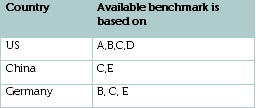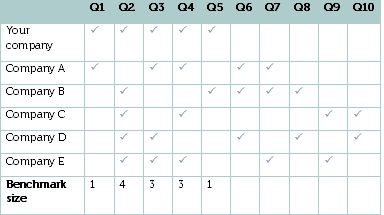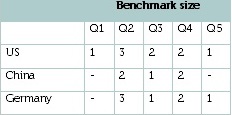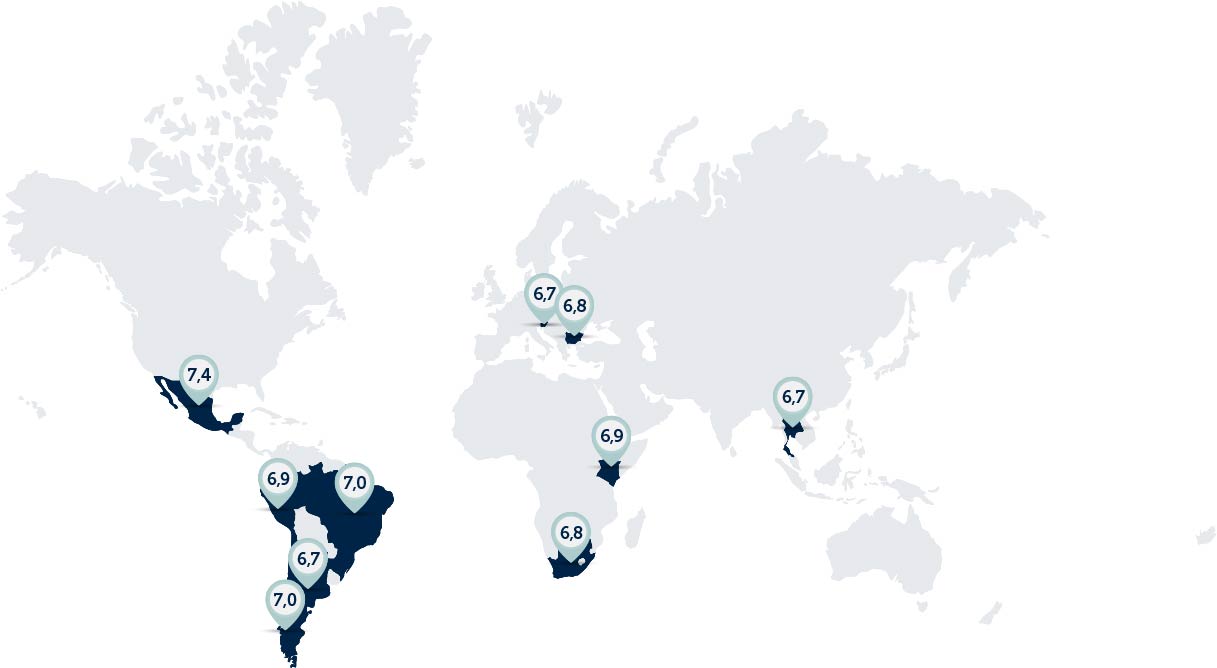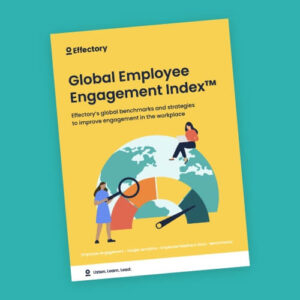Competitor and industry benchmarks in global employee surveys aren’t always what you think they are.
Beware when comparing yourself to global competitors

Most global companies conduct regular employee surveys, with benchmarks forming an integral part of survey projects. Whilst national peer group benchmarks offer valuable comparisons, there are questions surrounding the usefulness of global peer and competitor benchmarks.
From partnering with international organisations for 20 years, we have learnt that it is extremely hard to compare two global companies with pinpoint accuracy. There are simply too many differences (i.e. business model, locations, structure etc.) between international companies for them to be 100% comparable.
Global organisations today still insist on having a comparison with the ‘perfect’ industry benchmark within their employee surveys. Commonly global multinational companies ask for a benchmark with all of their major competitors, including all relevant international branches. Whilst in theory this may seem wise, experience has taught us that building international industry benchmarks on the outcomes of the surveys conducted with similar and or competing companies is risky.
Download our Benchmarking whitepapers now
Our free whitepapers offer valuable insights into benchmarking, as well as expert industry advice.
DownloadMy problem or the supplier’s? The issue of benchmark volatility
Your organisation has decided to conduct a global employee survey and has requested a benchmark with similar companies. The chosen supplier is working with companies A, B, C, D and E.
The global survey is completed and your performance for commitment is 75%, whilst the benchmark is 80%. Following this, the next year your survey results are in and your company still scores 75%. A quick look at the benchmark, and you see that your competitors dropped to 70%. Is this cause for celebration? Are you outperforming your competitors? The honest answer is probably not; chances are that the volatility of the benchmark is the biggest reason for the change.
Underlying the volatility could be several reasons. Perhaps Company A has stopped surveying with your supplier, or Company B has just re-structured and been forced to make a significant proportion of its workforce redundant. In reality, it means some of the benchmark data is no longer up to date, whilst other parts of it reflect exceptional circumstances within a company.
The bottom line is that your performance hasn’t improved, your scores are just being compared to a reference point that is highly susceptible to change.
Which benchmark should you use in your employee survey?
Benchmarking internationally
As a global business, your organisation operates internationally. Naturally alongside a direct comparison to an industry benchmark you also want to compare your offices in the US, China and Germany.
The supplier has informed you that the reference companies A,B,C,D and E operate internationally, although their chosen markets are slightly different from your own. This is perhaps not surprising as there are no companies that are identical to yours, but the result is that the benchmark coverage ends up something like this:
So in short, what you thought was an exact comparison is not. A proportion of the benchmark turns out to be somewhat arbitrary and there lacks an extensive comparison for all of the country branches in your organisation.
No two questionnaires are the same
To complicate matters, the questionnaires used by the five global companies in their surveys all differ. Imagine that you would like targeted insights, and opt to select five key questions to compare yourself to other companies:
A quick glance at the benchmark size immediately reveals several issues. The comparison of Question 1 isn’t substantial, it’s a one on one comparison with Company A. One important point to ask is how valuable is this? Perhaps Company A is performing badly, or is one of the least competitive in your industry. Further, Question 5 is also a direct comparison with Company B, which could be the best-in-class.
Most important is the level of insight which you gain. Are the insights gained from one-on-one comparisons really going to help your company reach a higher level of performance?
5 steps to create impactful employee surveys
Questions and countries combined
As a final exercise, try to imagine what would happen if you compare your company with the “ABCDE Benchmark”. This is what your benchmark for Q1 till Q5 really entails:
Looking at the table above, it is clear to see that the distribution of the benchmark is far from complete. Practically what started out as an interesting idea, has now turned into a patchy comparison of poorly composed, volatile and incomplete references. Thinking critically: Is the international benchmark that was sold to you really as valuable as you thought? Will it really help you outperform your global competitors?
The alternative
What if you could access an international benchmark that was free from volatility and threats such as companies switching suppliers?
In order to help solve these issues, Effectory created the Global Employee Engagement Index. The Index maintains an up-to-date (latest October 2015) database with local benchmarks on 250 questions and 18 HR themes for 52 countries.
The data for the benchmark is consistent, and based on a representative labour market scan in every country. As a result, the data remains accurate and a uniform point of reference for the entire survey journey. Specifically, the Global Employee Engagement Index solves your dependency on other reference companies by:
- Removing any risk of companies switching their supplier
- Removes any risk if companies change their questionnaire
- Removes any risk of suppliers or companies closing their operations in a country
- Ensuring there is an available country benchmark
The Global Employee Engagement Index contains local benchmarks on 250 questions and 18 HR themes for 52 countries
5 factors of successful employee engagement surveys
Global Employee Engagement Index™
Discover the Global Employee Engagement Index™ 2025 for key insights on driving employee engagement, improving performance, and enhancing team dynamics.
DownloadAdding value from cultural analysis
Numerous organisations and research institutes around the world have discovered the value of a consistent database. The Global Employee Engagement Index has proven to be an accurate source of information that helps companies to understand the differences in workplace cultures between countries and continents.
Furthermore, as more and more organisations experience issues with industry benchmarks, there is a growing recognition of the importance of understanding the cultural differences between countries. For organisations, the real added value comes from comparing the results of their different locations to the local labour market averages. Doing so enables them to single out cultural differences and really see how units are performing, without the risk of poor and inaccurate comparisons.
Book a free demo. See our solutions in action.
Effectory is Europe’s Leading provider of Employee Listening Solutions. Schedule a product demo and discover how to enhance your employees’ engagement.
Demo request
